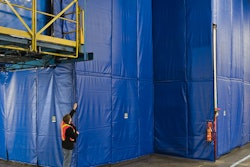
Netsuite
www.netsuite.com
© 2015
STRATEGIES TO
MODERNIZE
LEGACY ERP
www.netsuite.com
Page 2© NetSuite Inc. 2016
STRATEGIES TO
MODERNIZE LEGACY ERP
Last year, the CEO of a large software
company bragged to a journalist about
his base of on-premise, large company
customers. He called it "Fort Knox", saying
the core of his customers was "rock-solid"
and implying that his entire customer base
continues to renew its maintenance
every year.
His comment adds to a common myth in
the software market that large companies
are content to stay with legacy solutions
and do not adopt newer cloud, mobile and
social solutions. The newer solutions, the
argument goes, can only work for the small
and medium enterprise.
Nothing could be farther from the
truth. Analysis of customer feedback
shows enterprises, large and small, are
increasingly frustrated with their on-premise
technology vendors. They also know
the history of the software industry—few
vendors successfully navigate major
architectural shifts. Tired of waiting for these
vendors to modernize their environments,
many customers are increasingly doing so on
their own. We don't just see them in a handful
of customers, these are now in the hundreds
and thousands of customers.
Here are 5 of the popular
modernization strategies:
• Two-Tier ERP
• Ring Fence
• Rip and Replace
• Next-gen application management
• Dip your toes
Grab a seat and enjoy.
Read Time: 4 minutes
Page 3© NetSuite Inc. 2016
Two-Tier ERP
In the 1980s, as AS/400s and LANs matured,
many multinationals adopted two- or three-
tier application strategies—a mainframe-
based application for corporate and
domestic subsidiaries and regional hubs,
and decentralized versions for international
subsidiaries. These days, with improved
telecommunications around the world, many
companies are deploying cloud applications
in smaller subsidiaries, and do not even need
local IT infrastructure or support in those
countries. Visibility around the world and
consolidation of results improves dramatically
as a result of the global consistency.
Additionally, the costs are significantly lower
with companies paying only for a handful of
users in each of the smaller subsidiaries.
Examples from the NetSuite customer
base include the agricultural cooperative,
Land O'Lakes which has been rolling out
NetSuite across several global locations
while continuing to leverage J.D. Edwards
EnterpriseOne, Endeca and other Oracle
products. Shaw Industries, the large carpet
manufacturer, uses NetSuite in Asia Pacific
while continuing with Oracle products in the
US. ASICS which produces high performance
footwear, apparel and accessories is
implementing NetSuite as it expands
across S.E. Asia while using SAP for
corporate functions.
Ring-Fence
One common strategy among many large
companies is to “ring fence” back-office ERP
functionality with specialist solutions. There
are some SAP customers who have deployed
as many as 50 cloud applications around the
core ERP product.
This approach gives them a chance to
innovate at the edge and learn about newer
cloud and other computing models.
An example comes from HP Software, now
part of the new entity, HP Enterprise, which
uses a single unified instance of NetSuite
OneWorld to run mission-critical business
processes including order-to-cash, revenue
recognition, and multi-currency accounting.
Other HP divisions continue to leverage SAP
and surround it with cloud solutions from
Salesforce, Workday, DocuSign and others.
Rip and Replace
Many midsized companies, especially those
being spun off by a parent or being taken
over by private equity investors, often look at
that “life event” as an opportunity to move to a
completely new ERP system. While complete
replacements can be painful surgery for the
parents themselves, we are seeing a number
of companies who are motivated enough to
make the swap.
Examples include Brother Max, which focuses
on care and feeding products for babies and
toddlers which replaced SAP’s BusinessOne
with NetSuite. Adminovate, an enterprise
software and consulting provider in the life,
health and annuities industries, replaced
SAP Business ByDesign with NetSuite. So
has Greenberg, Inc, a research and strategy
consulting firm. Commco LLC, a distribution
and light manufacturing company, RedBuilt,
Page 4© NetSuite Inc. 2016
a commercial construction contractor, and
Penguin Computing swapped out the SAP
Business Suite. RedBuilt, the commercial
construction contractor, replaced SAP and
PeopleSoft functionality. Point6, maker of
high performance apparel, and Lovesac,
a furniture maker, replaced Microsoft
Dynamics. As MongoDB, the database
vendor, accelerates its growth it has
replaced Intacct. Slingshot Sports has
replaced Sage Peachtree.
Next-gen application management
In the on-premise world, one of the biggest
costs is around ERP application management.
It is not uncommon to see Accenture
or IBM with teams of 30, 50 or 100 staff
supporting an SAP or Oracle ERP shop doing
routine maintenance, small customizations
and upgrades. Just to support SAP, both
Accenture and IBM each have over 30,000
staff doing such work. Many customers are
looking for ways to shrink that by moving
to global delivery, offshore models or by
bringing some of that outsourced work
back in-house.
In the Netsuite cloud model many of those
tasks are delivered as part of the subscription
service. Additionally, around NetSuite,
the outsourcing firm Infosys is delivering
"Administration-as-a-Service". Infosys
manages the NetSuite implementation at
the customer and handles process queries
and how-to questions, which allow users to
implement new features as well as fix issues
in business workflows and integration with
other applications.
Dip your toes
For many companies, baby steps to the
cloud is the preferred approach. Modernizing
their infrastructure is a confidence-builder
to next tackle their ERP application. Many
companies have been trying out cloud
compute and storage services using Amazon
Web Services, Microsoft Azure, Oracle IaaS
and other public clouds. They find the costs
much more competitive and service levels
better than they are getting from their internal
data centers or their hosting providers. Still
others are moving to private clouds from
a new breed of provider like Virtustream,
Private clouds, typically, provide only a
fraction of the economic benefits of public
clouds, but many customers would prefer not
to give up their customizations or feeling of
control, and private clouds give them a level
of virtualization savings compared to their
prior hosting contracts. They also prepare
them for the cloud "pay as you grow" model,
shifting their previous infrastructure capex
investments to opex budgets. Still others
implement a cloud application in a division
before attempting a larger implementation.
In the NetSuite world, that was the case
at Akustica (a division of Bosch) and also
at Sioux Chief Manufacturing where they
deployed cloud in two smaller divisions to
“dip their toes.”
Tired of the pains of operating your legacy
on-premise ERP? Break free from the pains
you know – http://www.netsuite.com/portal/
solutions/legacy-erp.shtml.
Page 5© NetSuite Inc. 2016
About the Author:
Vinnie Mirchandani has been called "The King of Wow" for his
keen eye for technology-enabled innovation. His blog, New
Florence. New Renaissance., has cataloged over 4,000 posts
of innovative products, projects, and people in work, life, and
play. His books, The New Technology Elite, The New Polymath
and The Digital Enterprise (written for Karl Heinz Streibich) have
been widely praised as an "innovation firehoses". His latest
books, SAP Nation and SAP Nation 2.0, are more investigative
but carries his trademark style, which is case study-heavy. His
books draw on the breadth of his blogs, extensive research and
a global perspective from his travels to over 50 countries.
He is President of Deal Architect Inc, a technology advisory
firm. The firm helps clients take advantage of disruptive trends
like cloud computing and business process outsourcing (BPO)
before they go mainstream. Between this firm and previous role
at the technology research firm, Gartner, he has helped clients
evaluate and negotiate over $10 billion in technology contracts.
He spent his early career at Price Waterhouse, first as an
accountant, then as a technology consultant (that division is now
part of IBM). He has been quoted in most major technology and
business publications, and he has presented at a wide range of
industry events.
His sixth book, Silicon Collar will be released in September
2016. The book looks at how automation—machine learning,
robotics, unmanned autonomous vehicles, white collar bots,
exoskeletons, etc.—is changing the nature of work in over 50
settings. It is an optimistic read on the changing nature of work,
a celebration of outstanding workers, and the machines which
are making them even better.
Chat with an expert.
[email protected]
877-638-7848
www.netsuite.com






















